Think of Morocco and images of exotic souks, beautiful Moorish architecture and of the course the tagine all come to mind. Any food lover knows Moroccan food and the best place to learn more about it, of course, is Morocco. Essaouira, a small town on the west coast of Morocco is the perfect place for a long weekend or a three-day break to experience all the charms of Morocco and relax at the same time.
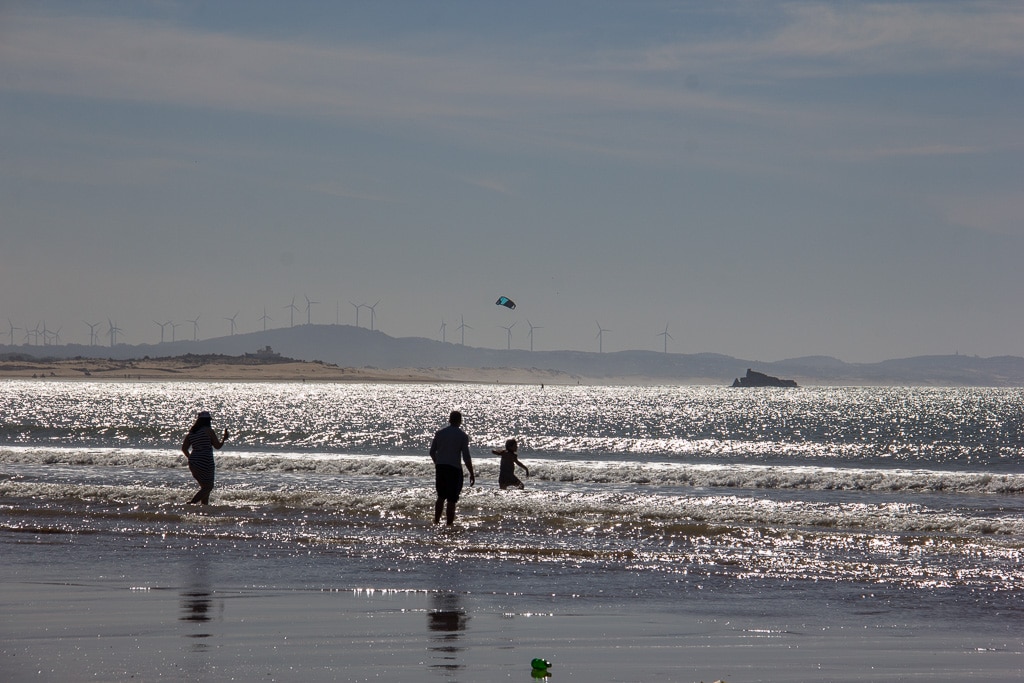
Essaouira on the West Coast of Morocco
Many people either have never heard of, or know little about Essaouira, with many Moroccan visitors heading to Fez or Marrakech. But Essaouira has two distinct advantages over both of those cities- its size and the coastline.
Being on the coast, the daytime temperatures rarely reach above 25°C or 77°F. Essaouira weather, pleasant any time of year, offers a range of beach and water sport activities including world class surfing and kitesurfing.
With a population of only 80,000, Essaouira, has all the attractions of other Moroccan cities: it’s a UNESCO world heritage site, has a traditional souk to explore and great food, but it also has the coastline. Essaouira’s smaller size makes a great introduction to Morocco whether for a long weekend or for the start of your longer Morocco itinerary. You can easily explore Essaouira in 3 days or stay longer if you wish.
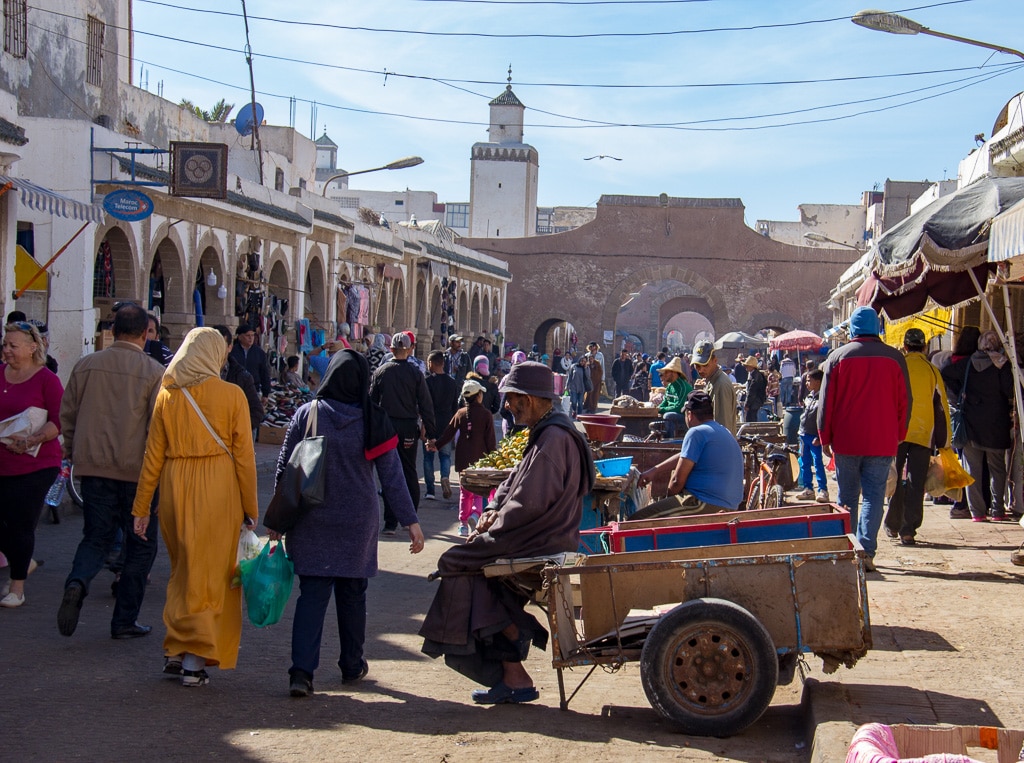

History of Essaouira
In the 6th century BC, the first inhabitants were the Berbers, naming the town Amagdul, which became an important trading port for the Greeks, Phoenicians, and Carthaginians in the 1st century. When the Romans arrived, renaming it to Tamusiga, it became an important port for the purple dye found in the murex shells found around the island. Highly prized by royalty and the wealthy, the dye was processed by the Tyrians.
Later the port, known as the “Port of Timbuktu”, became an important trading center between Africa and the Orient. Arriving in the 1500’s the Portuguese changed the name to Mogdura. The town continued to grow with the arrival of the Jewish traders. The skalas, or military fortifications you see around the walls of the city are from this period.
In 1765, the harbor and medina were built by a French architect according to a city plan. For a long period of time, Mogador was the only Moroccan port open to foreign traders. The city became a French protectorate and remained so until the 1950’s. The town was renamed Essaouira at this time, meaning “well designed”. (This story is not so different to the design and building of Hermoupolis, the capital of Syros, which was also once a French protectorate and important trading port.)
Orson Welles, whom a garden is named after, shot scenes from “Othello” here and the Game of Thrones has also filmed in Essaouira.
Where to Stay in Essaouira? Madada Mogador
Having convinced you on the virtues of visiting, where to stay in Essaouira? We stayed at Madada Mogador, a small boutique hotel located within the walls of Essaouira. It is near the traditional 18th century port where you can watch the blue fishing boats come and go or watch the boat repairs made in the rustic dry dock.
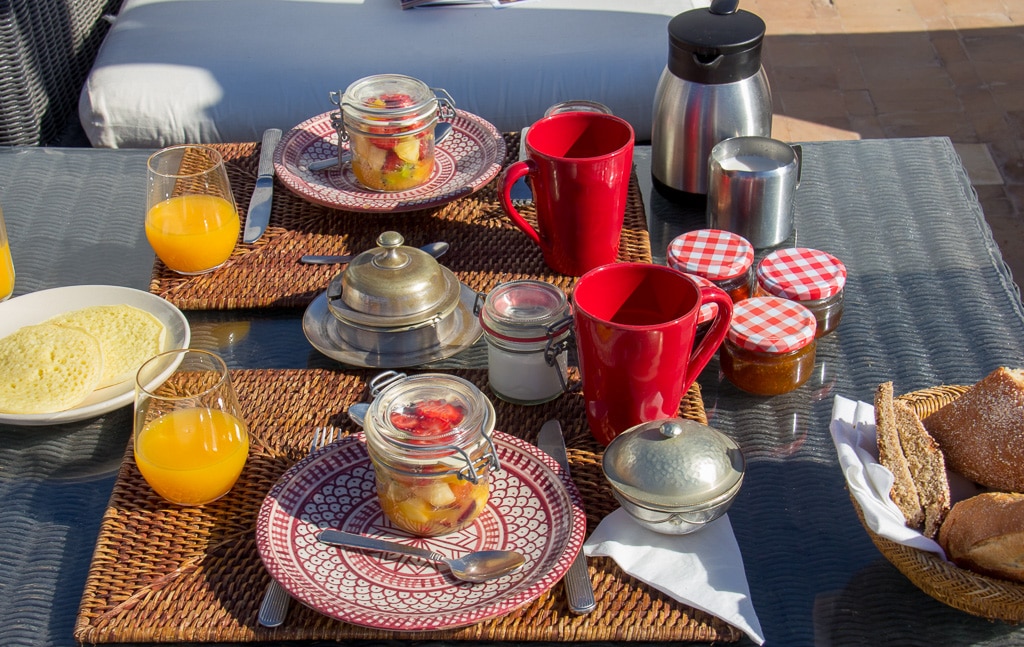
Staying at Madada Mogador
The hotel was originally a residence in the Jewish trading quarter and built before 1900. The current owner, Christine Dadda bought the properly in 2000, restored it and opened as a hotel in 2004. Rooms range from 115-180 euros per night including breakfast.
A hearty, Morooccan breakfast served in the lounge, on the rooftop terrace with lovely views of the beach, or in your room starts the day.
Madada Mogador was well organized and happy to assist with reservations or transportation arrangements. They organized both our airport pick-up and our transfer to Marrakech, as well as assisting with dinner reservations and cooking school.
A nice touch, they provide a map and a mobile phone for use during your stay. If your feeling unsure about directions, the doorman can walk with you to your destination. But then again, getting lost is half the fun, you never know what else you might find!
Everything in the historic UNESCO World heritage site is within a short walk of the hotel. Exploring the spice, fish, grain, and vegetable souks and shopping for souvenirs is a pleasant, friendly experience and many would prefer it to the hustle and bustle of Fez and Marrakech’s larger, busier souks. For first time visitors to Morocco, it’s the perfect introduction.
And if you are a food lover looking to learn more about Moroccan food, you won’t want to miss La Table Madada and L’Atelier Cooking School.
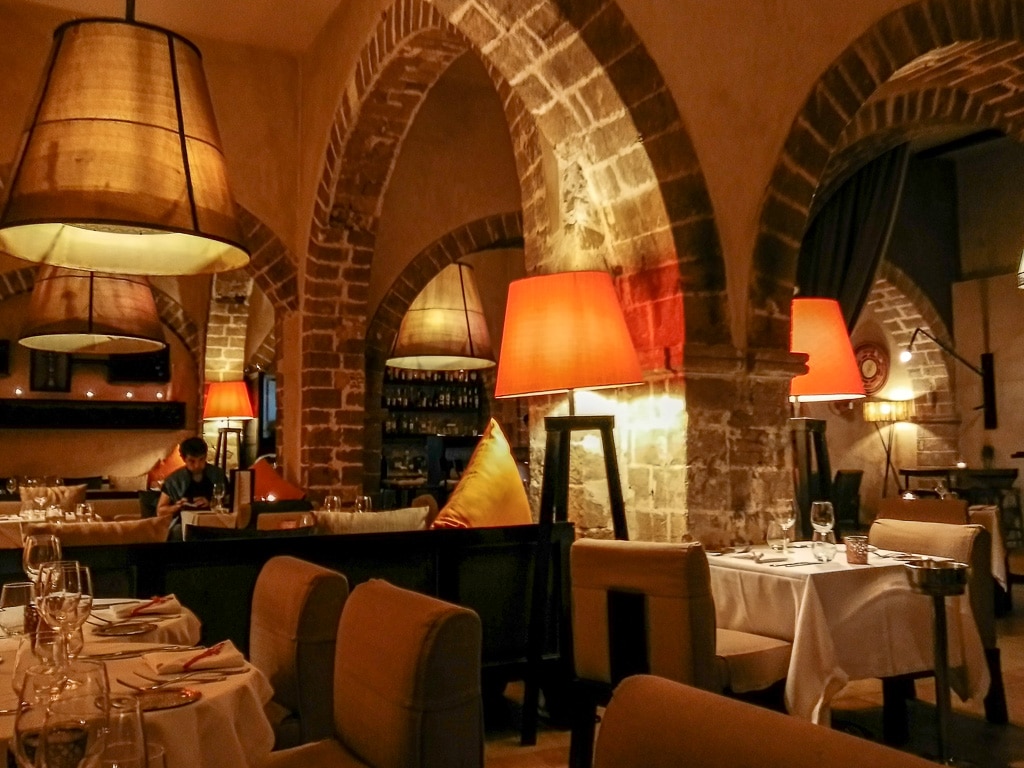
La Table Madada: Seafood Restaurant
La Table Madada, located in a former carob storehouse, next door to Madada Mogador, makes it an easy walk from the hotel. With a warm ambiance and fantastic service, the restaurant features fresh seafood from the local port and a selection of local wines. Opening at 7pm, our candlelit dinner at La Table Madada was one of the highlights of our entire trip through Morocco.
Our first course was sautéed squid with garlic and parsley and an order of razor clams, a local variety of clams, in white wine broth. Next, a local crab, spider crab served au gratin. Rich and very filling. The fish tagine, a specialty in Essaouira, made with John Dory, a fish caught fresh by the fishing boats from the port, was a real treat. If you want to try a fish tagine, Essaouira is the place to do it.
A bottle of Moroccan wine, Medallion Sauvignon Blanc, was the perfect accompaniment to the entire meal.
And somehow, we managed to leave room for dessert- a Chocolate crème brulee and a chocolate fondant- and coffee.
La Table Madada is a great place if you have a special occasion to celebrate. The service is excellent and the seating well-spaced for privacy. Our waiter spoke more languages than I can count on one hand!
Or if you prefer, La Table Madada has informal dining at the tapas bar from 9 am to 10 pm.
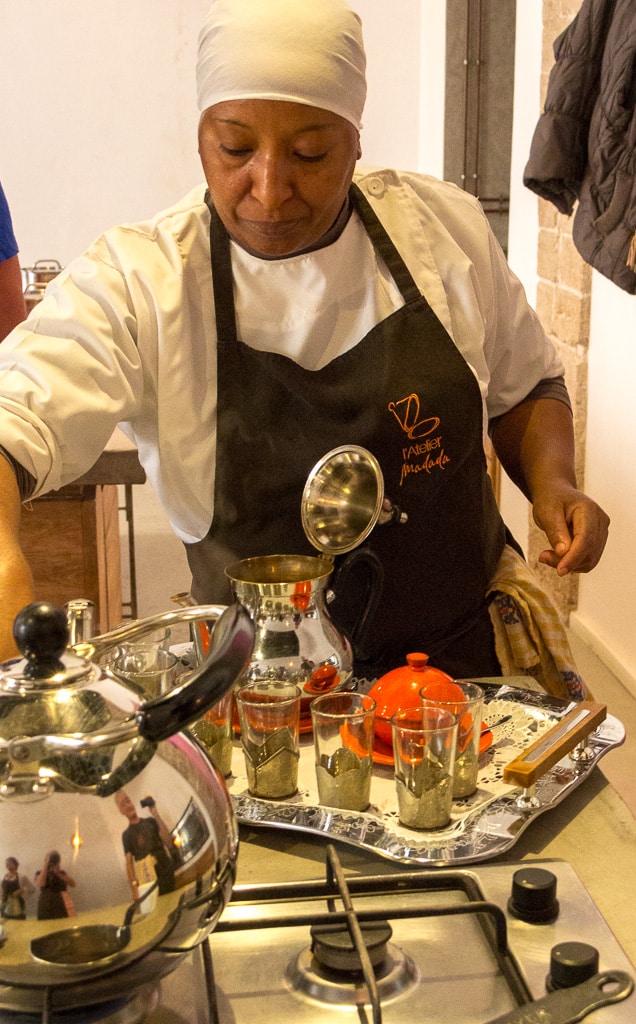
A Moroccan Cookery Workshop at L’Atelier
We have been to quite a few cookery schools around the world, and L’Atelier stands out as one of the best so far. With no more than 8 students, this is a hands-on course making Moroccan dishes. Including a trip to the spice souk to learn the history of Moroccan spices used for both cooking and health, the ½ day course is high quality and well organized.
Also owned by Madada Mogador, and just on the next street over from the hotel, L’Atelier opened in 2009, moving to its current premisis, an old almond warehouse, in 2017. Your teachers for the course, Mona and Allison, make a dynamic team. Mona, the Moroccan cook, overseas the preparation and cooking, while Allison provides a very entertaining and informative commentary on Moroccan flavors and cuisine.
The menu varies. We prepared seafood bastille (another local dish from Essaouira) and a cooked aubergine (eggplant) salad as the appetizer. Lunch is eating the results of your efforts, after the tour of the spice souk.
The class started with a lesson on the proper way to make mint tea, during which I know I learned a few things!
Chopping, chopping, chopping!
Chopping might well be the theme for these two recipes! Someone asked about consistency and if they found they really ended up with 8 versions of the same recipe at the end of the class. “No” was the resounding answer. And I can see why- under Mona’s watchful eye- she watches your measurements for spices- and nothing goes into your recipe until it has passed the chopping inspection. And the chopping is VERY fine for a bastille! Trust me on that one!
Kitchen Tips from the Pros
One of the things I enjoy about cooking classes is the interesting tidbits and techniques you pick up working with a professional. Much more informative than just using a cookbook.
The interesting tidbit from the class was how to prepare garlic and onions properly. At certain times of the year, garlic and onions have a “bud” in their centers. In a clove of garlic, if you cut it in half down the middle, you find a white spot or a larger bud which may have a green tinge. If you cut this bit out of the garlic or onion it does two things:
- Eliminates the body odor that sometimes results from eating onions or garlic.
- Eliminates reflux or indigestion after eating a meal with garlic and/or onions.
Discarding this small part of the onion or garlic before chopping it solves both these issues. Who knew!
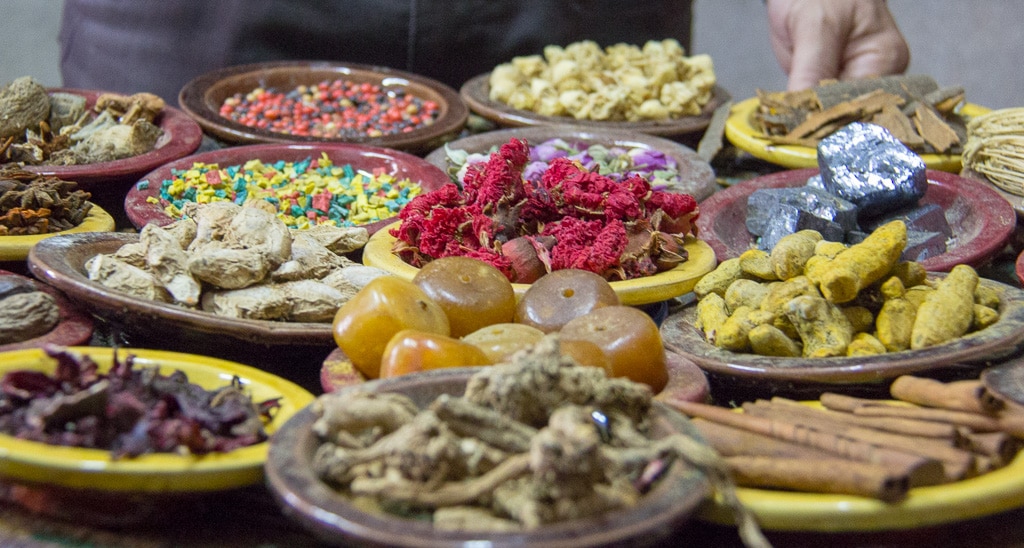
Flavors of Moroccan Cuisine
The secret to good Moroccan cooking is no one flavor dominates. When chopping garlic, we actually went one step further and pressed the garlic into a paste with the side of the knife (much as a garlic press would) before adding it to the recipe. Moroccans use dried ground ginger, as fresh ginger is too strong and dominates the other flavors. Some common Moroccan flavors and ingredients include:
- Sweet paprika is more common in Moroccan cuisine than smoked or hot paprika which is rarely used. Use paprika for fish and salad- never with meat (viande) or chicken (poulet). Pork is not really eaten in Morocco as both Muslim and Jewish communities don’t eat pork.
- Ras al Hanout – meaning top of the shop- is a blend of 25-40 spices mixed by the spice merchant and used at home for preparing meat or vegetables. Each spice shop’s blend varies.
- Cumin is the spice of Morocco. While cumin is grown in Morocco, producing about 900 tonnes, cumin must still be imported as Morocco consumes over 5000 tonnes per annum. Part of the same family as parsley, cumin is used for cooking and to treat many common ailments. Cumin flavors meats, tagines, soups, and couscous dishes. Usually in Moroccan homes, cumin is on the table (like salt or pepper). Coughs, colds, sinusitis and stomach pains are ailments treated with cumin.
- Orange blossom water, commonly used in Moroccan cooking. Not to be confused with rose water, which is originally Turkish, and used for washing the face, cosmetics, or perfume.
- Argan oil, native to Morocco, when used in cooking, uses roasted nuts, giving it the aroma of roasted nuts. Heat damages the oil, (it has a low heat tolerance), so use argan oil in salads and other dishes but not to cook over heat. Argan oil for cosmetic purposes, commonly hair and skin products, uses un-roasted nuts and has little to no smell. (Be careful where you buy argan oil, there are a lot of fake versions in Morocco, especially in some of the large souks.)
Learning about the flavors of Morocco was a combination of the commentary provided by Allison during the class, as well as from the visit to spice souk in the afternoon. If you are looking for a good place to buy spices and/or argan oil try Mohamed, Stall no 203 in the spice souk (near the fish market).
Spice vendors also act as the local apothecary or naturopath mixing compounds and solutions to treat health ailments. The spice merchant also sells natural dyes used for paint, cosmetics and dye for clothing. This short video is about the purple dye which made Essaouira famous.
You can find more information and register for a Moroccan cooking class (they also have a course on making oriental pastry) on L’Atelier’s website.
Couscous and Tagines
Friday’s traditional meal is couscous. Making couscous from scratch takes hours, beginning with making the pasta and then several hours of steaming. We will share the full process in a later article where we eat couscous at a traditional Berber home.
The tagine, the name for both the finished dish and the conical shaped dish, cooks the food slowly by steaming. Much of what is served as a tagine in Moroccan restaurants, is actually not cooked in a tagine, it is just served in one.
Tagines for cooking have no painting or decorations, they are usually terracotta colored. You can find traditional tagines being cooked on the outskirts of the market. Go early in the morning and “reserve” your tagine. Due to the slow cooking times, if they start cooking in the morning, it is ready mid-day for lunch. You will also see them cooking along side the road at many stands.
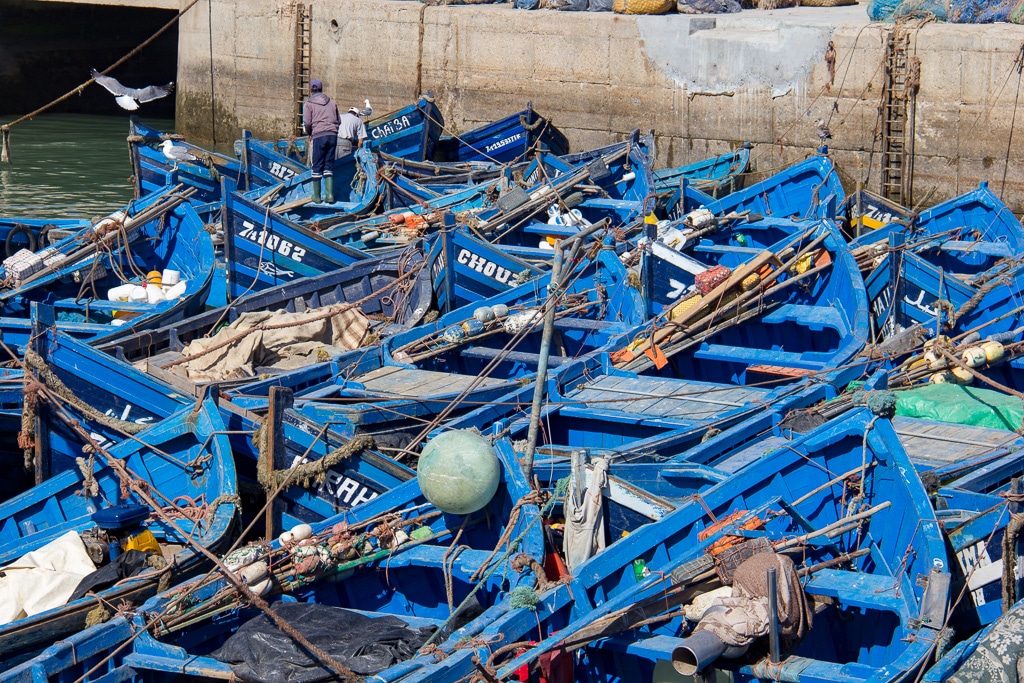
Restaurants and Bars in Essaouira
Villa Maroc and Umia are good options for a nice meal. For waterfront dining try Ocean Vagabond. For casual dining, well priced, visit Loft. Go early or make a booking.
If you want cheap and cheerful fresh seafood, try the waterfront near the fishing boats. Choose a stall with a crowd!
For sunset drinks, visit the Taros Café and Restaurant, Il Mare or La Rencontre.
What to Buy and Where to Shop in Essaouira
Thuja, marquetry from this wood found only in Essaouira, is available in shops in the souk. Jewelry boxes, chess boards and tables are common items made in this style. Wrought iron, argan oil, leather or weaving including rugs or clothing are other common souvenirs. Wander around the souk and check out the selection and prices before you buy. Bargaining is usually expected especially if the items have no price.
Next to Madada Mogador, Le Comptoir Oriental by Madada, features homewares, furniture and textiles from Africa and Morocco. Items have prices, if you prefer not to bargain in the souk.
If you want spices or argan oil, you can find Mohamed at stall number 203 in the spice souk near the fish market.
Other Things to do to in Essaouira
Other easily accessible activities in Essaouira include horseback or camel rides, windsurfing, surfing, and golf. Just outside of town, visit a winery or an argan collective. Your hotel can assist with arrangements and/or transportation.
Getting to Essaouira
Flying direct to Essaouira or overland from Marrakech (about 3 hours) are the easiest options. EasyJet, a budget European carrier, flies direct from London’s Luton Airport on Tuesday and Saturday.
Getting from Marrakech to Essaouira, take either the public bus service or arrange a private transfer (about 70 euros at the time of our visit). The distance Marrakech to Essaouira is 120 miles or 192 kilometers. The bus leaves from just outside Essaouira’s medina walls, dropping you at the terminal in Marrakech where you will need to make your way to your hotel. A shared taxi system operates in Marrakech for around 20 dirhams (MAD) per person per trip, around $2 USD.
Morocco’s currency, the dirham (DHS) or (MAD), is only used locally, there is no international market or exchange for dirhams. You can exchange money at one of the many foreign exchange booths or withdraw money from the ATM. (There is no ATM at the airport when you arrive in Essaouira). Many taxi drivers and hotels also accept euros. We paid for our airport transfer with euros, then withdrew MAD from the ATM.
The medina is a no vehicle zone (for the most part), taxis will stop outside one of the gates to the medina. A system of porters with small carts transfers your luggage from the taxi to your hotel (which means you don’t have to know exactly where it is!) Tipping the porter 20 dirham or two euros is the norm. You can agree ahead on the fee if desired or find your own way to your hotel.
Madada Mogador at a Glance
Check current availability and prices for Madada Mogador on Booking.com.
| Name | Madada Mogador |
| Where | Essaouira, on the West Coast of Morocco |
| Style | Moroccan Chic |
| Atmosphere | Casual with a lovely rooftop terrace with water views |
| Type | Small Boutique Hotel inside the Medina |
| # of Rooms | 8 (some with ocean views, the Loft Suite sleeps 4) |
| Service | Excellent, friendly and helpful |
| Dining | Breakfast included- served in the lounge, rooftop terrace or your room |
| Additional Services | Can assist with reservations, transportation and provide a mobile phone for use during your stay. |
| Extras | Also own La Table Madada (seafood restaurant and tapas bar), L’Atelier (cooking school) and Le Comptoir Oriental by Madada (homewares shop) |
| What we Liked | Easy to organize a range of activities, the perfect no-hassle short break. |
| Recommended For | Perfect for first time Morocco visitors, short breaks, or food lovers. Easy to start or end a longer Morocco trip in Essaouira |
| Good to Know | 2- night minimum stay. No car required.
Direct flight Tuesday and Saturday from London’s Luton Airport. |
We were guests of Madada Mogador, all opinions are our own.


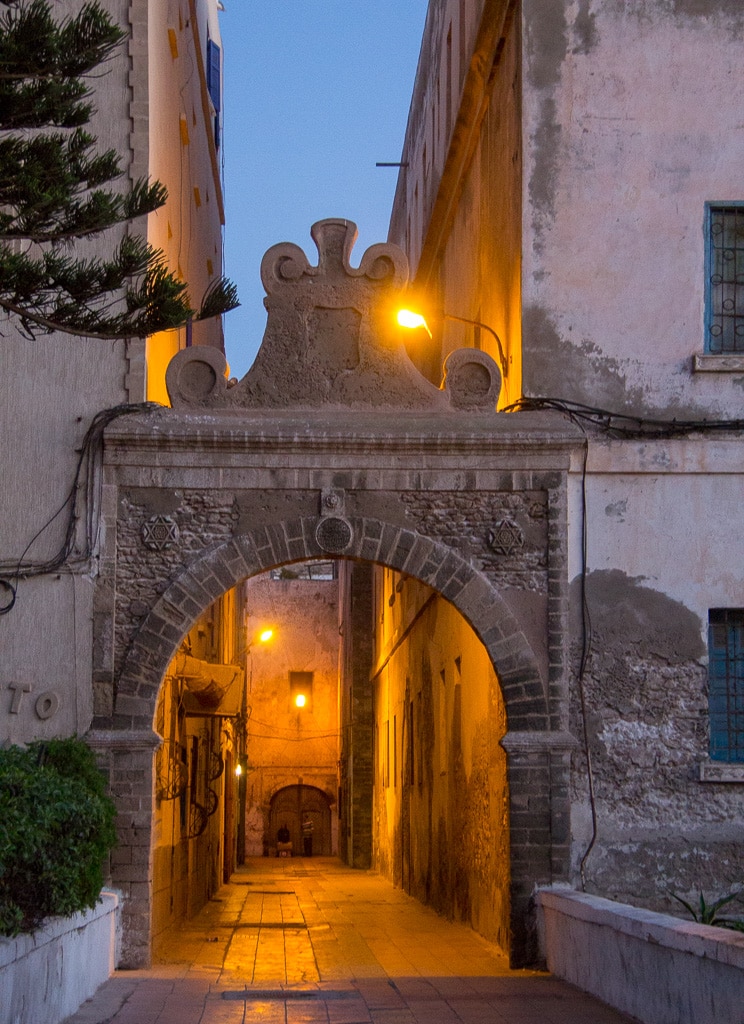
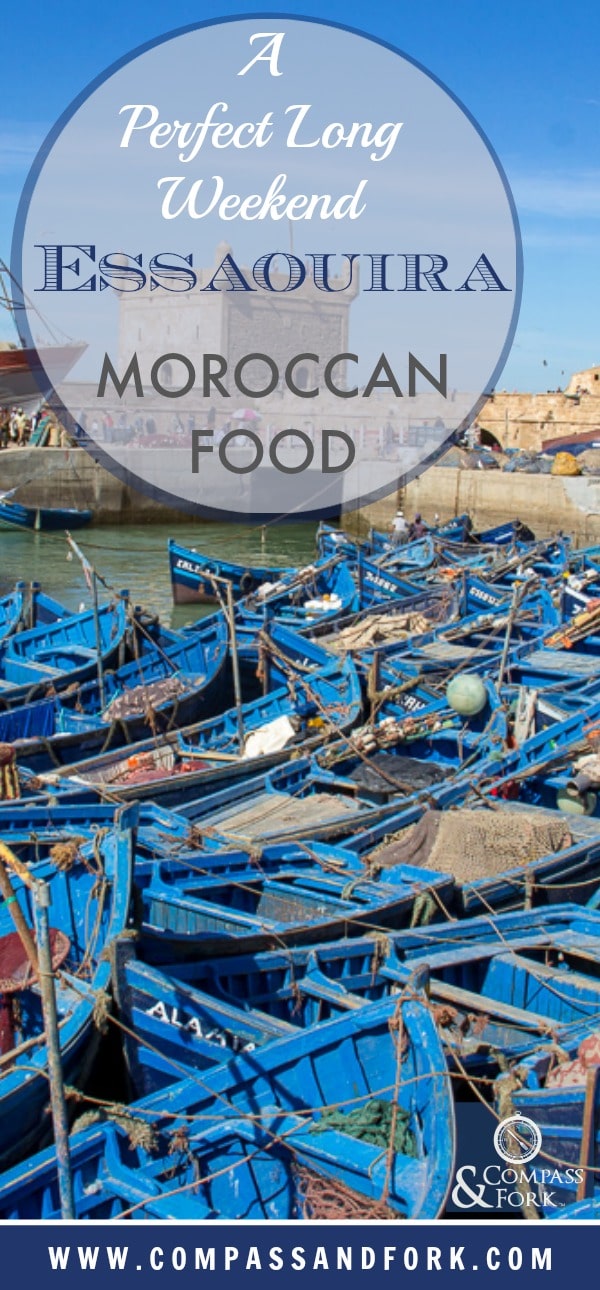
Leave a Reply